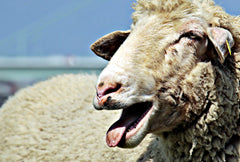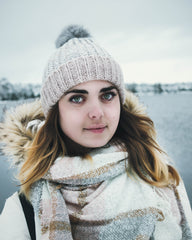
Breeding and shearing sheep to obtain their wool is not new!
The first records of its use date from 1600 BC in the northern countries of Europe. But is this wool that we cherish ecological? What is its impact on ecology?
Wool production around the world
It is estimated that around 67 kilos of wool are produced per second worldwide, or 2.1 million tonnes per year. This wool is produced by more than 1 billion sheep across the planet and the main producing countries are Australia, China, New Zealand, Iran, Argentina and the United Kingdom. The share of wool in world production represents approximately 1.7% of total textile fibers and the most frequent uses are in clothing and insulation .
Wool production in CanadaSheep farming in Canada dates back to 1664 , from the beginnings of agriculture in the country.
At this time, sheep were essential animals for food and the manufacture of clothing for the settlers. The beginning of the 20th century marked the peak of the Canadian sheep population, reaching 3.6 million sheep. However, the two world wars and the industrial revolution marked textile history with manufactured and synthetic fabrics causing a considerable reduction in the demand for wool.
Today, there are nearly a million sheep in Canada, mainly for their meat.
The ecological impact of wool
Like all textiles, all consumer items, wool has a certain impact on the ecology. The main environmental issues surrounding wool are directly linked to the various well-known problems linked to intensive breeding .
The impacts of this include the consumption and risk of degradation of water, energy consumption and the disappearance of forests in favor of meadows for animal feed. Added to this is a significant aspect: global livestock farming is responsible for 14.5% of greenhouse gas emissions . Let us note here that the consumption of meat certainly weighs more than breeding for wool...
Then the impact must be observed taking into account that farmed sheep are regularly treated with insecticides in order to prevent infections of the flock. Finally, there are even sheep that have been genetically modified to make them produce more wool and give them better resistance to disease.
The properties of wool
Wool, a 100% natural fiber, has exceptional characteristics that make it adaptable to a wide variety of weather conditions.
Through its thermal properties, it has the ability to trap in its fibers the air heated by the body, which makes it a fiber of choice in cold, humid or rainy weather.
It also has excellent moisture transfer properties with the ability to accumulate a third of its weight in water vapor, leaving the wearer dry. Wool fabrics do not retain odors and also require less maintenance than synthetic fibers and cotton, saving energy and water.
More ecological solutions
Despite the impacts mentioned, it remains preferable to favor natural fibers such as wool! Far from textiles made from petrochemicals, natural wool offers us comfort and well-being without disproportionately harming our planet.
Obviously, it is important to choose organic wools. By organic, we mean that the production of wool, or the breeding of sheep, is done without pesticides and without chemicals as much for the treatment of the animals, their food and the land on which they are raised.
Also, there are recycled wools which come from already existing clothes and which are carefully recovered to make new clothes.
We can also consider merino wool because it is this species that produces the most wool for a single animal ( 8,000 km of wool yarn per year).














0 comments